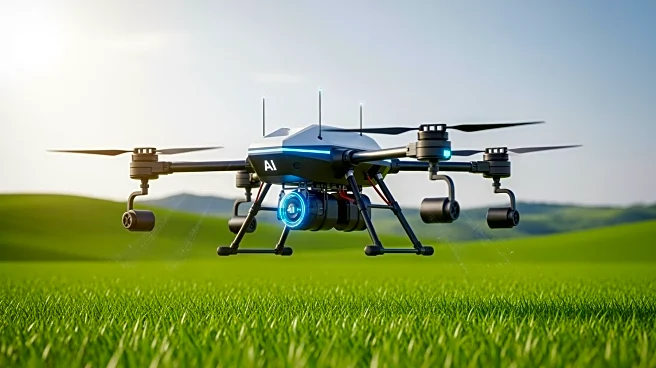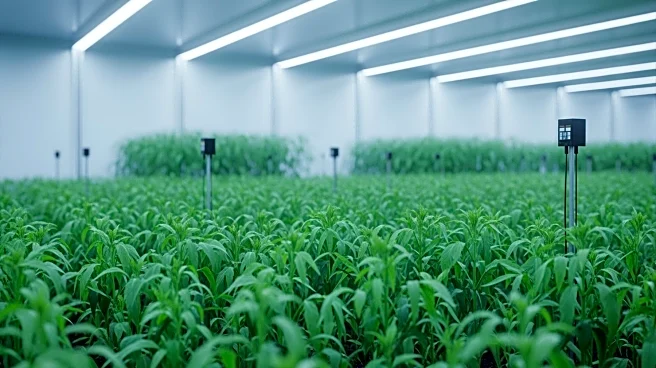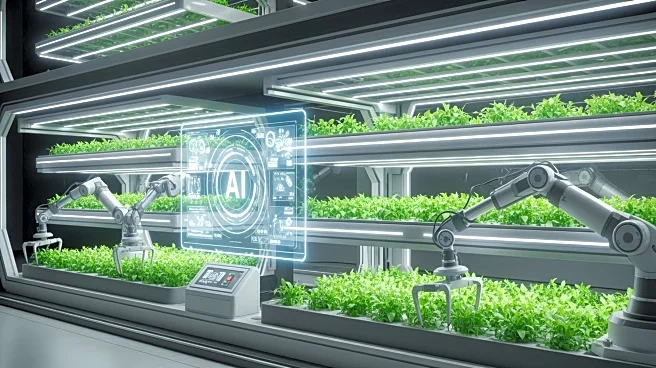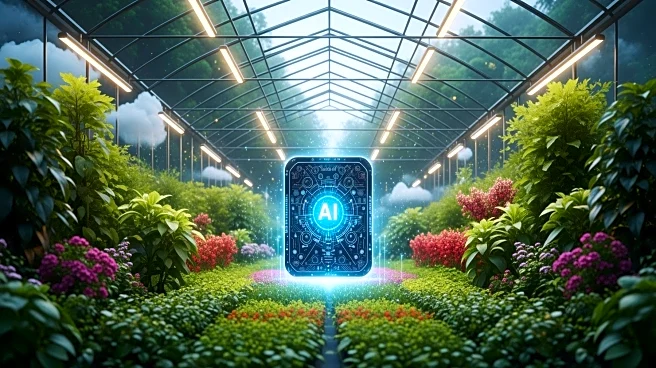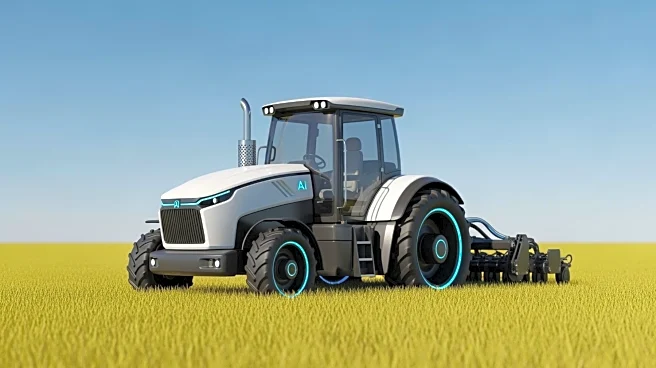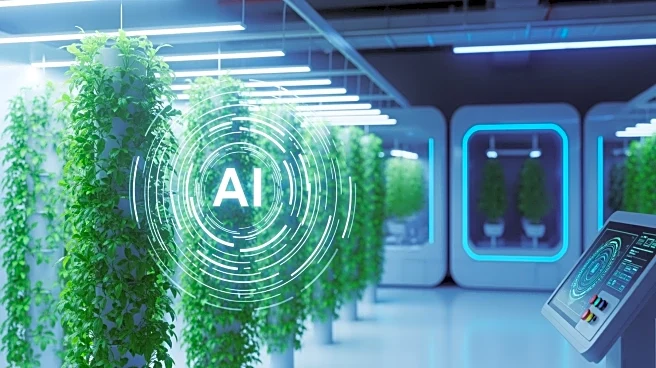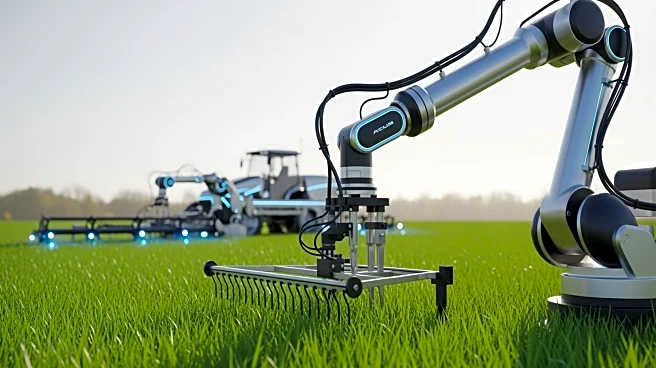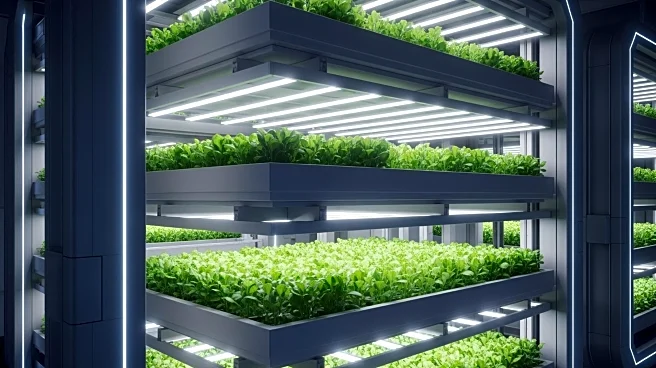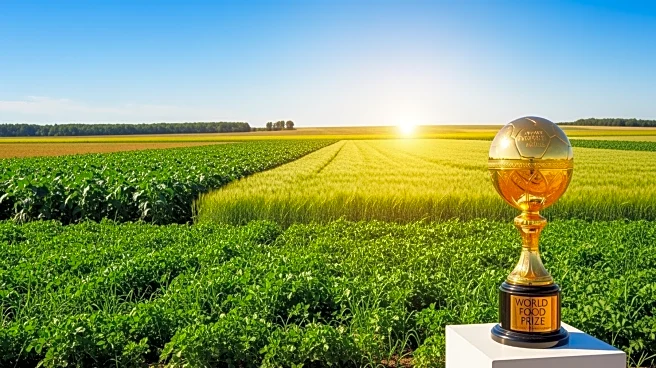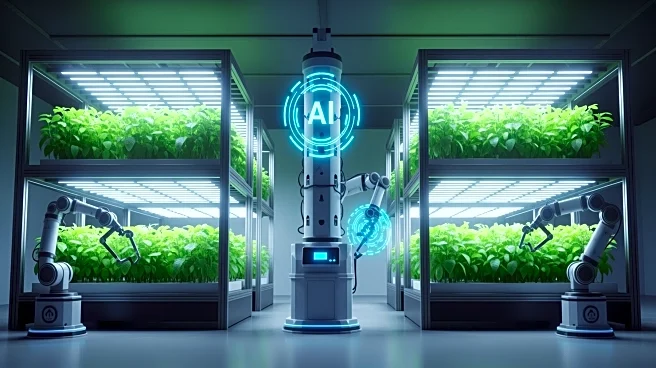What's Happening?
The agricultural adjuvants market is projected to grow from USD 1.61 billion in 2024 to USD 2.10 billion by 2031, according to Verified Market Research. This growth is attributed to a compound annual growth rate (CAGR) of 3.71%. The market expansion is significantly
influenced by the integration of artificial intelligence (AI) and automation technologies. These technologies enhance efficiency, precision, and scalability in the agricultural sector. AI-powered analytics and predictive modeling are enabling companies to optimize operations, reduce waste, and anticipate market trends. Automation is streamlining repetitive processes, minimizing human error, and accelerating production timelines. The adoption of AI in agricultural adjuvants is facilitating the development of smart adjuvants that optimize pesticide performance, reduce environmental impact, and enhance crop yields.
Why It's Important?
The growth of the agricultural adjuvants market is crucial for advancing sustainable farming practices. As AI and automation become more integrated into agriculture, they offer solutions that can significantly improve productivity and environmental sustainability. This is particularly important in regions where resource optimization is critical. The market's expansion reflects a broader trend towards precision agriculture, which aims to increase efficiency and reduce the environmental footprint of farming. Companies in the sector, such as BASF SE, Bayer AG, and Dow Chemical Company, are likely to benefit from these technological advancements, as they can offer more effective and environmentally friendly products. This growth also indicates a shift in the agricultural industry towards more innovative and sustainable practices, which could have long-term benefits for food security and environmental conservation.
What's Next?
As the agricultural adjuvants market continues to grow, further integration of AI and automation is expected. This could lead to the development of even more advanced adjuvants that further enhance crop yields and reduce environmental impacts. Companies in the sector may increase their investment in research and development to stay competitive and meet the growing demand for sustainable agricultural solutions. Additionally, there may be increased collaboration between technology firms and agricultural companies to develop new AI-driven solutions. Policymakers and industry leaders may also focus on creating supportive frameworks to encourage the adoption of these technologies, ensuring that the benefits of precision agriculture are widely realized.
